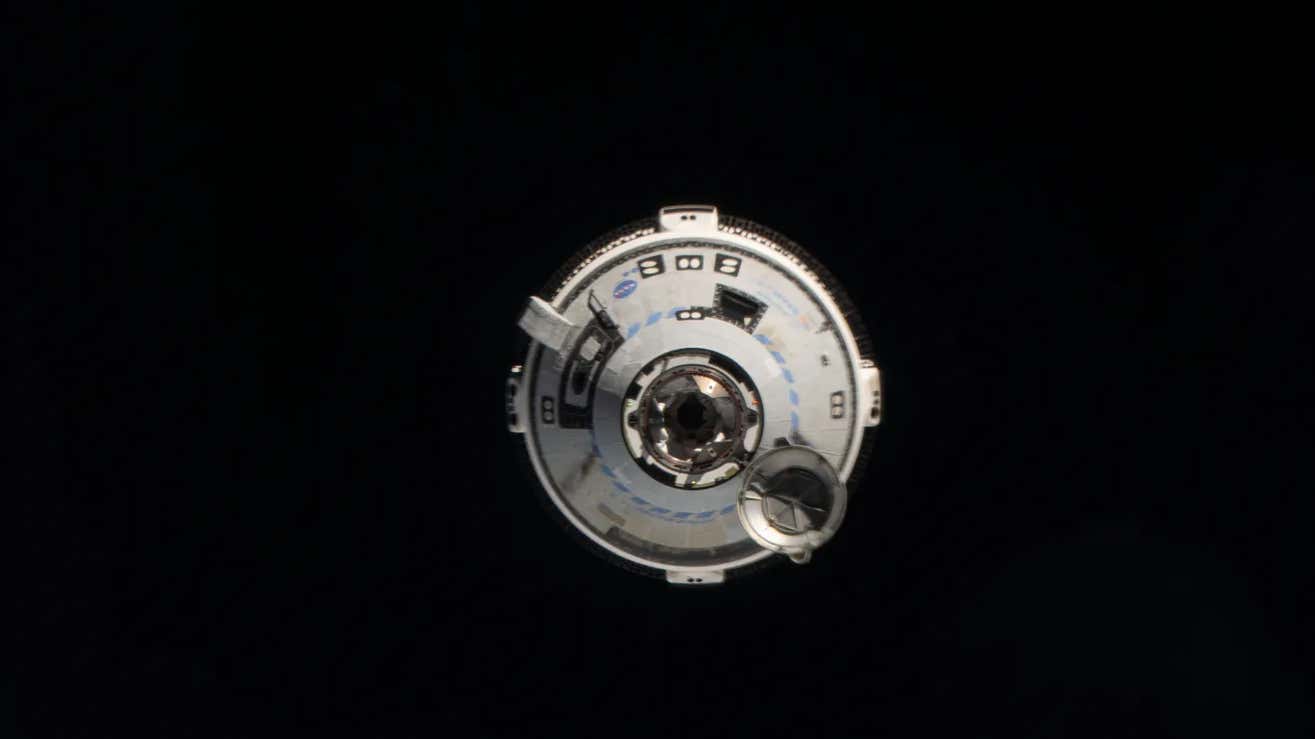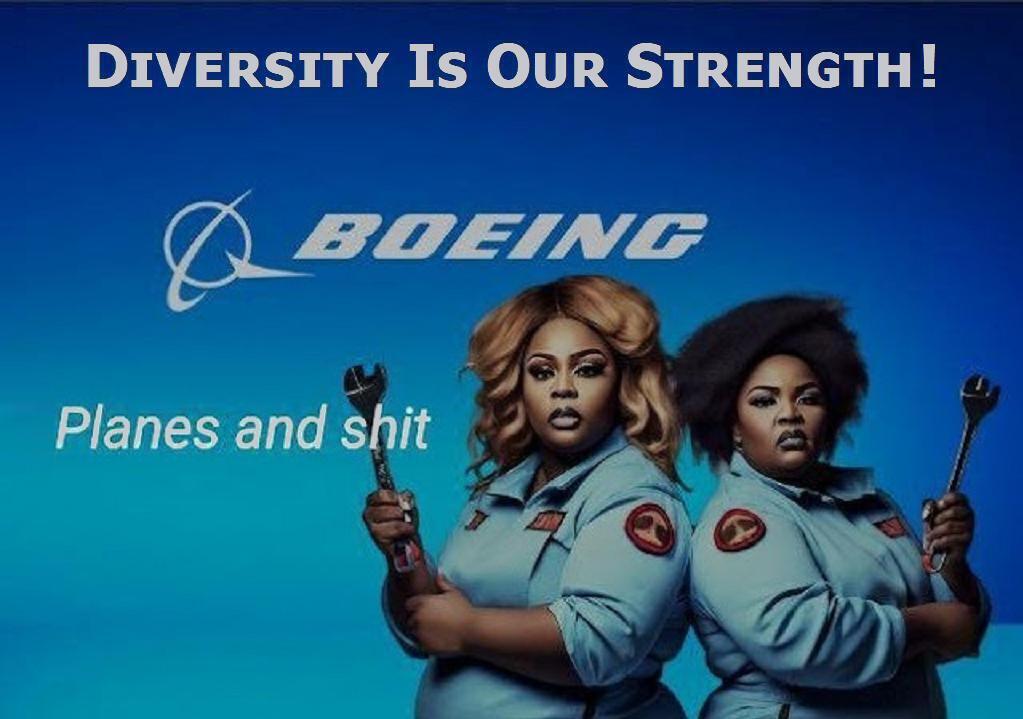
Posted on 06/13/2024 5:12:45 AM PDT by Red Badger
Starliner teams detected a helium leak before launch, two more after liftoff, and now a fourth and fifth leak with the vehicle docked at the ISS. Oh my.

The Starliner spacecraft approaching the International Space Station. Photo: NASA
**************************************************************
Following an iffy docking at the International Space Station last week, Boeing managed to deliver a pair of NASA astronauts to the orbital lab. The stressful Starliner saga continues as the crew capsule developed more leaks in its service module. NASA is currently evaluating its ability to return the duo back to Earth.
In an update shared on Monday, NASA revealed that the Starliner teams are assessing the impact that five helium leaks would have on the remainder of the mission. “While Starliner is docked, all the manifolds are closed per normal mission operations preventing helium loss from the tanks,” the space agency wrote.
If you’ve been keeping track, there were three leaks on the Starliner spacecraft the last time we checked. Starliner teams had identified two new leaks on the spacecraft after it launched on June 5, in addition to a helium leak that was detected prior to liftoff. The team took some time to assess the issue before launching the capsule, but eventually Boeing and NASA decided to proceed with flying the crew on the leaky Starliner spacecraft without resolving the problem.
The spacecraft consists of a reusable crew capsule and an expendable service module. Helium is used in the spacecraft’s thruster systems to allow the thrusters to fire without being combustible or toxic. “We can handle this particular leak if that leak rate were to grow even up to 100 times,” Steve Stich, manager of NASA’s Commercial Crew Program, said during a news conference before the Starliner launch.
Well, it’s getting there. Despite the leaks suggesting a larger issue with Starliner’s propulsion system, NASA remains confident in its commercial partner and is downplaying the spacecraft’s anomalies. “Engineers evaluated the helium supply based on current leak rates and determined that Starliner has plenty of margin to support the return trip from station,” NASA wrote in its update. “Only seven hours of free-flight time is needed to perform a normal end of mission, and Starliner currently has enough helium left in its tanks to support 70 hours of free flight activity following undocking.”
A “normal end of mission” is key here seeing as how Starliner had a hard time docking to the ISS. Starliner missed its first docking opportunity at 12:15 p.m. ET due to technical issues, prompting NASA to target another docking window an hour later. Five of the spacecraft thrusters failed during its approach, and four were subsequently recovered. The capsule finally docked with the ISS at 1:34 p.m. ET on June 6.
While it’s parked outside the ISS, engineers also are evaluating an RCS oxidizer isolation valve in the service module that’s not properly closed, according to NASA’s recent update. An RCS, or Reaction Control System, uses thrusters for attitude control and steering, while the oxidizer isolation valve regulates the flow of oxidizer, which is essential for burning fuel in the thrusters. Mission managers are continuing to work through the return plan, which includes assessments of flight rationale, fault tolerance, and potential operational mitigations for the remainder of the flight,” the space agency wrote.
Starliner is scheduled to undock from the orbital space station no earlier than June 18. The Crewed Flight Test is part of NASA’s Commercial Crew Program and is meant to transport crew and cargo to and from the International Space Station (ISS) under a $4.3 billion contract with the space agency. NASA’s other commercial partner, SpaceX, has so far launched eight crews to the space station.
The spacecraft’s first crewed flight was meant to usher in regular trips to the ISS, but NASA may require Starliner to undergo some fixes before it approves the capsule for normal operations.
For more spaceflight in your life, follow us on X and bookmark Gizmodo’s dedicated Spaceflight page.
5 leaks. The leaks must be diverse in nature.
5 leaks. 1 leak each from each marginalized group.
I don’t see why not. The Crew Dragon is designed to carry four people , but only two are required to fly it. It just depends on how quickly they can switch out a current payload to Dragon capsule.
There is a Crew Dragan Module docked at the space station now. If needed the two stranded crew members can hitch a ride back with them.
My own take is that someone, or some group, is shorting Boeing stock.
Or - a hostile foreign country is deliberately disrupting business at Boeing because Boeing is the second largest USA defense contractor.
The amount of detailed information that is instantly released about Boeing planes and the Boeing ISS Shuttle is completely unprecedented.
This all started with the four Muslim pilots who crashed two Boeing 737 MAX planes in Ethiopia and Indonesia.
Before those two crashes, the exact same plane flew 60,000 flights in Europe, North America, Aus-NZ, Japan, and the Persian Gulf, without even one incident report concerning the software that allegedly killed several hundred people.
Starliner burns monomethyl hydrazine and nitrogen tetroxide.
Crew Dragon 2 can hold 7 passengers.
Is helium more "leaky" because its most common isotope, two protons and two neutrons, is so small?
That’s my understanding. Like hydrogen molecules.
I know.
But burning hydrazine contradicts the author’s statement “Helium is used in the spacecraft’s thruster systems to allow the thrusters to fire without being combustible or toxic.”
there was a strange noise in the front of the truck and a thump-thump-thump that shook the cab.
My mom did that with her 1981 Monte Carlo one winter/spring day. Same thing, except the cat was cut up, but still alive. She put it in the car, took it to the vet, and saved its life. Tom, as he was later named, became a garage kitty for the rest of his life. She also started knocking on the hood 3-4 times as she walked to the drivers door to get in, to wake up and scare any kitties (or other animals) that crawled in the compartment for warmth.
“Remember: This Equipment Was Provided By The Lowest Bidder”
Not for Boeing and NASA. It was awarded to the highest bidder with the most diverse workplace and the most politically connected.
I would love to know how helium keeps them from being toxic. And I would like to know ‘toxic to what? They are only fired in a vacuum.
Deploy the MuskPod and get ‘em back home quick. The ISS is also an orbiting disaster waiting to happen, way past its operating expiry.


Unused propellant when the spacecraft comes back to earth is toxic to ground crews. That is why you always saw Shuttle ground crews in full hazmat suits.
If we only had 1960s technology and those black women geniuses to do all the math for our space missions, we’d be soooo much better off!
**************************************************
and engineers in charge....
could be the seals and not the valves them selves
boeing keeps recycling the valves.
Disclaimer: Opinions posted on Free Republic are those of the individual posters and do not necessarily represent the opinion of Free Republic or its management. All materials posted herein are protected by copyright law and the exemption for fair use of copyrighted works.